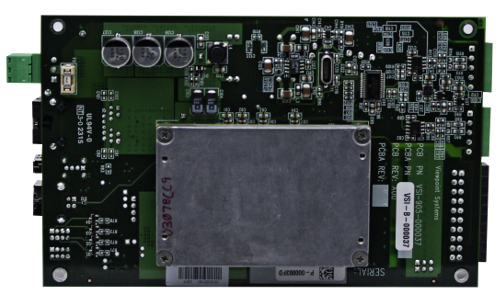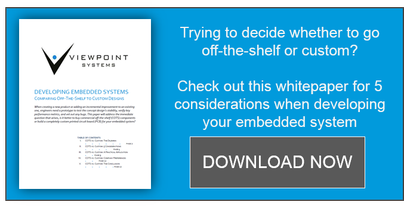
Comparing OTS and Custom Design for Embedded Controllers
Before being able to answer these path-defining questions, prepare yourself by knowing the following items
The Dilemma
Dare I say that every product designer today stumbles on a single big step when building a new product, refurbishing an obsolete product, or enhancing an existing product? Here’s the big step: should the controller be constructed from off-the-shelf (OTS) components or from a custom design?
Finding the answer is complex and no one path will apply to everyone. But reviewing some specific questions will alleviate some of the confusion in making a choice. These are the questions I ask our clients when they are looking for guidance on possible directions.
Preparation
Before being able to answer these path-defining questions, prepare yourself by knowing the following items. Don’t spend more than a few days or maybe a week to get this information. If you do, you will be feeding precise information into fuzzy considerations, which will likely cause you to rework that precise information. Here’s the list.
- Is the controller for a new device or an upgrade to an existing device?
- Annual quantities. I want to see quantities for each specific product model, even if, for example, model X is only a slight variation of model Y. Better yet if you know projected annual for the next three to five years.
- A list of required I/O for each model. I want to see the following:
- For each input, sensor types or levels and type (DC or AC) for voltage and current.
- For each output, actuator types or levels and type (DC or AC) for voltage and current.
- For each I/O, need for isolation.
- For each I/O, connectivity requirements.
- For each I/O, sample data rates and resolutions.
- Operating environment, such as temperature range and shock and vibe levels.
- Restrictions on physical size and weight. I would want to know if the controller needs to fit in a tight location or be less than a certain weight.
- Certifications required, such as UL, CSA, and CE Mark. Obtaining each one of these certifications costs money, so if you don’t plan to sell to Europe (yet), then I’d like to know.
- Software development environment. I want to understand which SW dev tools you plan to use, and how familiar you are with them.
Important Considerations
With the design preparations in the prior section, you can start on some cost comparisons.
Note that commonalities exist within each industry. For example, in the energy power monitoring sector, the I/O is often tailored around 3-phase synchronous digitizing. In industrial machines used in manufacturing and testing, force and proximity sensors are often used, sometimes with synchronous digitizing as well (such as might occur in monitoring a CNC metal cutting machine or a cold head force machine).
When commonalities exist in an industry, OTS solutions can be more available than niche or new markets, for the simple reason that a marketplace already exists.
So, here are the considerations I look at when helping clients make decisions about the OTS versus custom, also called the buy versus build choice. These considerations aim at the custom choice, since you can simply ask the vendor of the OTS product for the comparable information.
- Build a cost model for the cost per unit.
- If there are multiple similar models, compare the differences in I/O, because it may be cheaper to build a unit to handle the “max” configuration in higher quantities than multiple “cheaper” but slightly different units.
- Review warranty handling to understand repair versus replace costs.
- Understand enclosure, mounting, and connection needs.
And, of course, you need to determine if an OTS solution even exists with the specifications you need at a price that is reasonable. Even if no OTS path exists, reviewing the considerations above will help you refine the custom path.
For more in-depth information about COTS vs. custom designs for embedded systems, check out our white paper: Comparing Off-The-Shelf to Custom Designs for Industrial Embedded Systems.
